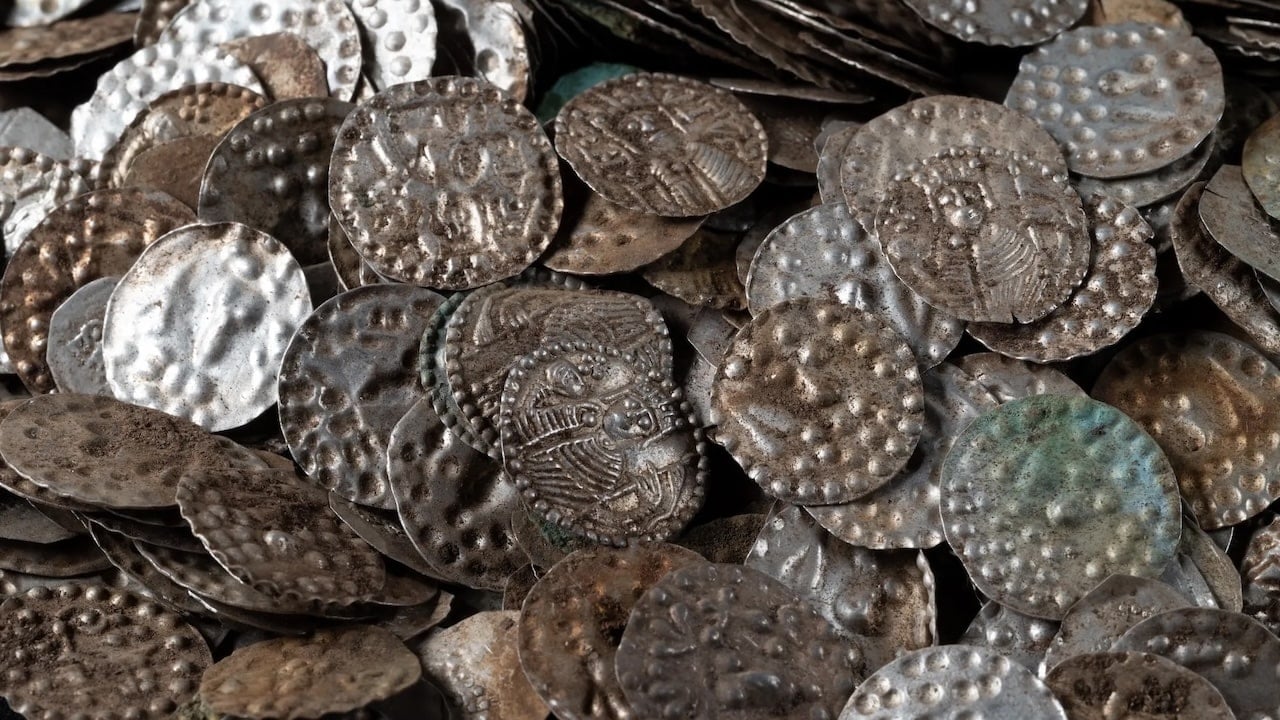(Mike Maharrey, Money Metals News Service) He was hoping for a lucky day of fishing. As it turned out, he was luckier than he could have imagined.
An unnamed Swedish fisherman was digging around for worms at his summer home, prepping for a day on the lake. Along with some slimy invertebrates, the fisherman also dug up a corroded copper cauldron. Inside was nearly 13 pounds of treasure dating back to the Middle Ages.
Among the rings, pendants, and other pieces of jewelry were as many as 20,000 silver coins.
According to county administrative board member Sofia Andersson, it’s one of the largest treasure troves from that period ever discovered in Sweden.
The coins date back to the 12th century. Some are embossed with KANATUS, the Latin name of King Knut Eriksson, who ruled the country from 1172 until his death in 1195. There were also “bishop coins” in the treasure trove. These coins were minted in Europe and were used by clergy. They feature an image of a bishop holding a ceremonial staff known as a crozier. According to Popular Science, “The images on these coins suggest clergy actively negotiated with kings and wielded quite a bit of power in medieval Sweden.”
Unfortunately for our intrepid fisherman, he won’t get to keep the silver. But he is entitled to a finder’s fee under Swedish law.
Officials haven’t determined the value of the cache. From a historical standpoint, the treasure is priceless. According to Earth.com, the coins could shed new light on the time period.
“Large hoards compress history into a sealed container. They capture a money system at one moment and freeze a network of trade and taxes. Patterns in this cache may show how silver moved between town and countryside. They may also reveal what people trusted when storing wealth.”
Historical value aside, the silver in the coins is worth a pretty penny. The individual coins are relatively small and thin. They weigh around 0.3 grams each. But there are around 20,000 of them. That totals around 6,000 grams or 190 ounces. At today’s silver price, the melt value is around $9,800.
Our intrepid fisherman could buy a lot of worms with that haul.
And it goes to show – real money retains its value over time.
Think about it. You could take these 850-year-old coins and use them to buy a sandwich today from anybody who understands the value of silver.
Now imagine if somebody finds a box of dollar bills in 850 years. What do you think they’ll be worth?
Probably nothing. That’s assuming paper money could even survive buried for that long.
Or what about a treasure trove of modern quarters and dimes?
It would also likely be close to valueless. They are made from a metal alloy that’s not worth a whole lot. That is, unless you find quarters and dimes minted before 1965. Those are 90 percent silver. The melt value of a 1964 or earlier quarter is currently around $9!
They call these old dimes, quarters, and half dollars “junk silver.” But it’s pretty clear what is real junk.
OK, so how about finding pennies sometime in the future? The U.S. government just minted the last 1-cent piece this week. Of course, thanks to relentless monetary devaluation, a penny isn’t worth anything even today. But at least they are made of copper, right?
Well, not unless you find a penny minted earlier than 1982. That year, the government took most of the copper out of the penny. Modern pennies are mostly zinc. I don’t think many people are going to get fired up about finding zinc in their yard.
In all likelihood, you’re not going to dig up silver in your backyard. But you can still get silver quarters, dimes, and half dollars. We’re currently running a pretty good deal on them here at Money Metals.
Photo courtesy of the Stockholm County Administrative Board
Mike Maharrey is a journalist and market analyst for Money Metals with over a decade of experience in precious metals. He holds a BS in accounting from the University of Kentucky and a BA in journalism from the University of South Florida.

